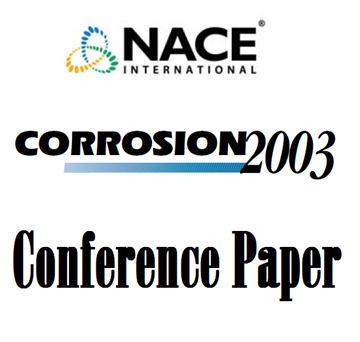Search
Products tagged with 'interference'
View as
Sort by
Display
per page
03202 The use of Dedicated Simulation Software for the Design and Understanding of the Cathodic Protection of Underground Pipeline Networks under various Interference Conditions
Product Number:
51300-03202-SG
ISBN:
03202 2003 CP
Publication Date:
2006
$20.00
10102 High Voltage Direct Current Interference with Underground/Underwater Pipelines
Product Number:
51300-10102-SG
ISBN:
10102 2010 CP
Publication Date:
2010
$20.00
51317--9786-Risk Analysis for Assessing AC Corrosion in Trasnmission Pipelines
Product Number:
51317--9786-SG
ISBN:
9786 2017 CP
Publication Date:
2017
$20.00
A Novel Approach to Assessing Stray Current Interference without Potential Interruption
Product Number:
51324-20452-SG
Publication Date:
2024
$40.00
A Pipeline Operator’s Experience With AC Induced Corrosion
Product Number:
51321-16518-SG
Publication Date:
2021
$20.00
AC Corrosion At Other Frequencies Part A: Field Investigation And Mitigation
Product Number:
51321-16807-SG
Publication Date:
2021
$20.00
Cathodic Protect Area Of Influence Study
Product Number:
51321-16877-SG
Publication Date:
2021
$20.00
Effective Pipeline Corrosion Monitoring in Regions Impacted by External DC Polarization Factors
Product Number:
51324-21132-SG
Publication Date:
2024
$40.00
Interference Study between a Solar Array Power Station and a Transmission Pipeline
Product Number:
51324-21051-SG
Publication Date:
2024
$40.00
Laying the Foundation for an Engineered and Integrated Approach to Pipeline External Corrosion Protection
Product Number:
51322-17962-SG
Publication Date:
2022
$20.00










